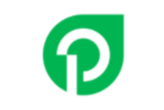Today we are glad to let you virtually enter our factory in Romano d'Ezzelino, near Bassano del Grappa, in Veneto, where we realize your flexible packaging. Welcome!
From printing to bags’ creation: in this article we will tell you step by step how our flexible packaging is born, the machinery and technologies we use and, above all, why we chose them. Ready to follow your packaging’s journey?
Let’s print!
At Packstyle we use digital printing and due to this technology we modernised the flexible packaging market. In fact, digital printing means being able to print short and micro runs, customize the packaging, have no warehouse problems, make marketing tests, adapt your mockups for the launch of new products or prepare a packaging for a particular anniversary: a few years ago all these things were almost impossible or very expensive for companies.
At Packstyle, we use a machine that is considered the giant of digital printing: the HP Indigo 20000. It is a machine with a high clearness and print quality, just like the rotogravure machines. Compared to traditional machines, however, setting up a new job with the Indigo is much simpler and less expensive. The machine does not require complicated initial configurations so it is possible to produce dozens of different jobs in the same day, waste is reduced and we can manage graphics with different versions in a few moves.
The machine can also print large bags with thicknesses ranging from 10 to 250 microns, whether they are paper, film or aluminum [read more about flexible packaging materials].
Indigo technology inks are low migration - that is, they do not pass easily from packaging to content - and thus meet both European rules and American regulations on food contact.
Lamination: the different layers of the packaging are arranged together
Lamination is the process that collects different layers of materials to gain all the advantages from each, it supplies a protective layer to the package and provides various types of finish, glossy, matte…. In short: it is a bit the heart of the creation of flexible packaging.
The lamination of the packaging can be done cold, using adhesives. At Packstyle, on the other hand, we use hot lamination (also called thermo lamination) which enables packaging to be more sustainable and suitable for food contact without using glue and adhesives. Futhermore it allows you to pack the bag with no waiting times. This is one of the reasons why we are able to guarantee deliveries starting from 6 working days.
The technology that allows us to do all this is called Packready and is developed by Karlville, a company we will introduce you shortly. This technology is instantaneous and creates a strong bond between the digitally printed material and the lamination film. Not only it protects the print quality, but it also allows you to create glossy, matte, soft touch finishes - that has to do with touch - and much more.
We trim the pouches in reels
The pouches, printed and laminated in a single roll, move to the trimming department.
Here a specific cutter trims the reels, that is, it cuts the surplus of the reel making sure that it is the right size to be loaded later in our machines for the creation of the bags. All this happens within a few seconds.
Sometimes customers purchase the printed and laminated reel directly so to use it in their filling machine. Even in these cases, trimming will ensure the exact size of the reel for the customer's machine.
Just a final touch and here are our bags!
The last steps allow you to create beautiful and ready-made pouches, designed to be sent to the customer. Everything happens thanks to Karlville pouch machines, a definitely innovative company that has been operating in this sector for over 20 years.
The machines we use in Packstyle are extremely compact and versatile, thus they allow to use only one machine for different types of bags: saving time, cutting costs and waste of material and energy.
For example, we can work on flat or stand-up bags, in different formats (large, medium, small and very small bags) using different types of materials on a single machine.
The software helps us to quickly change settings from one job to another and to store information for each type of product. This is how we reduce start-up times with each change of format or material.
In these last machines, the bags are enriched with additional elements: the zips to close them after use, for example, or the hole to easily hang them on the displays. At the end, the packaging - which arrives here still on reels - is cut into single pieces, that are quickly shipped to the customer.


